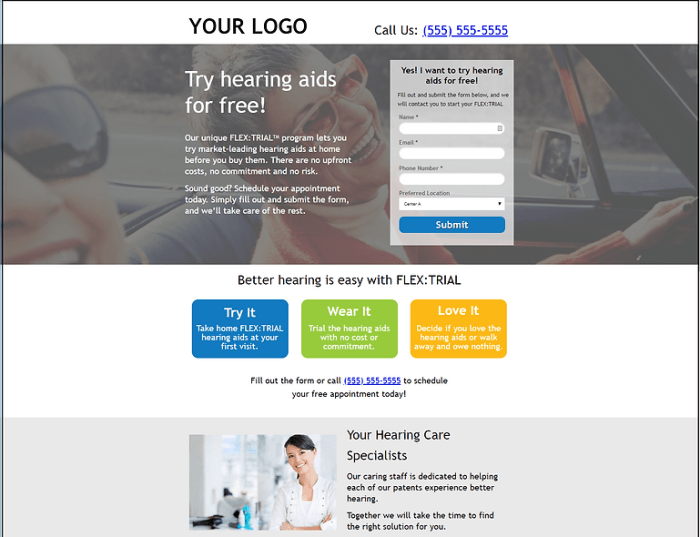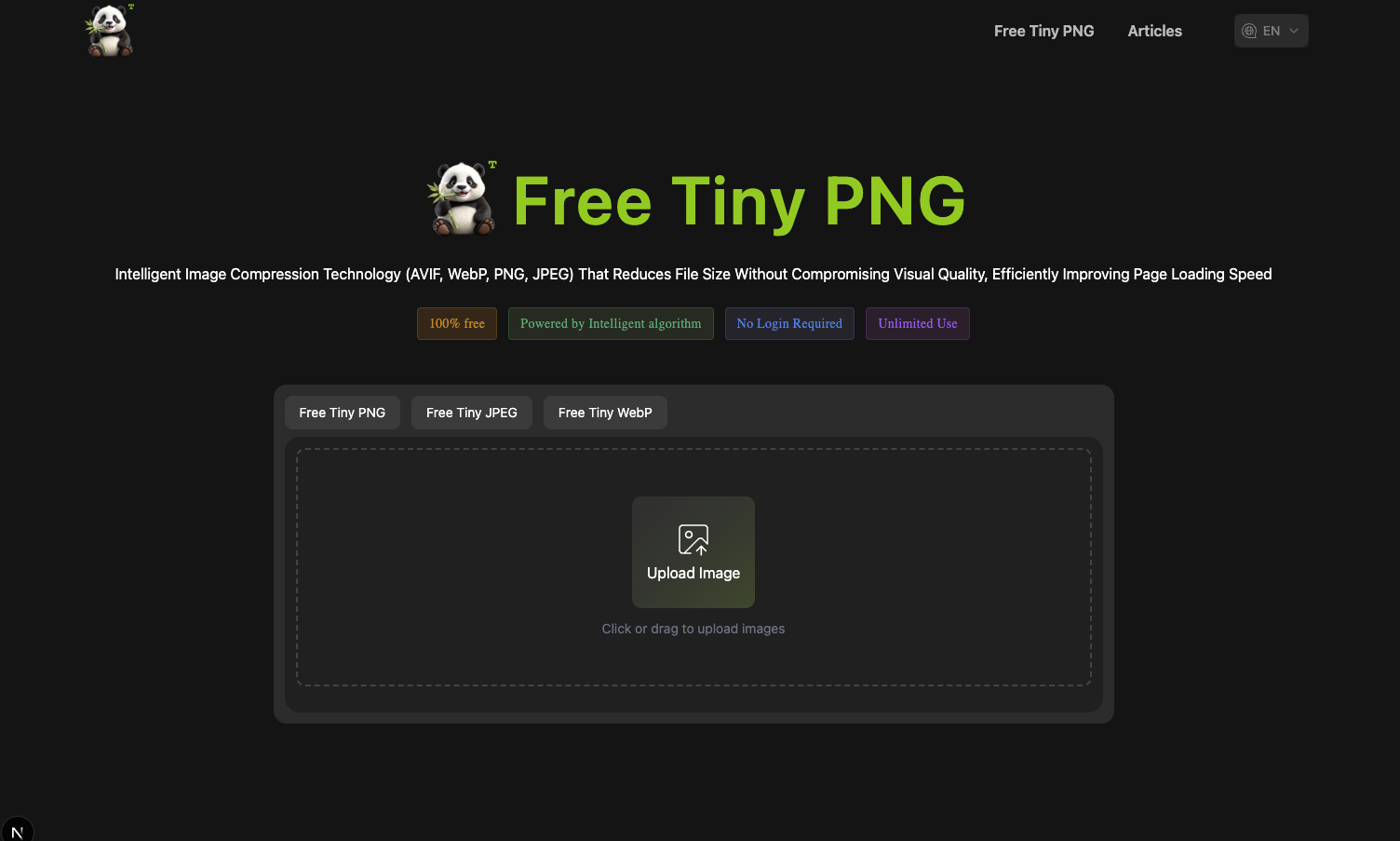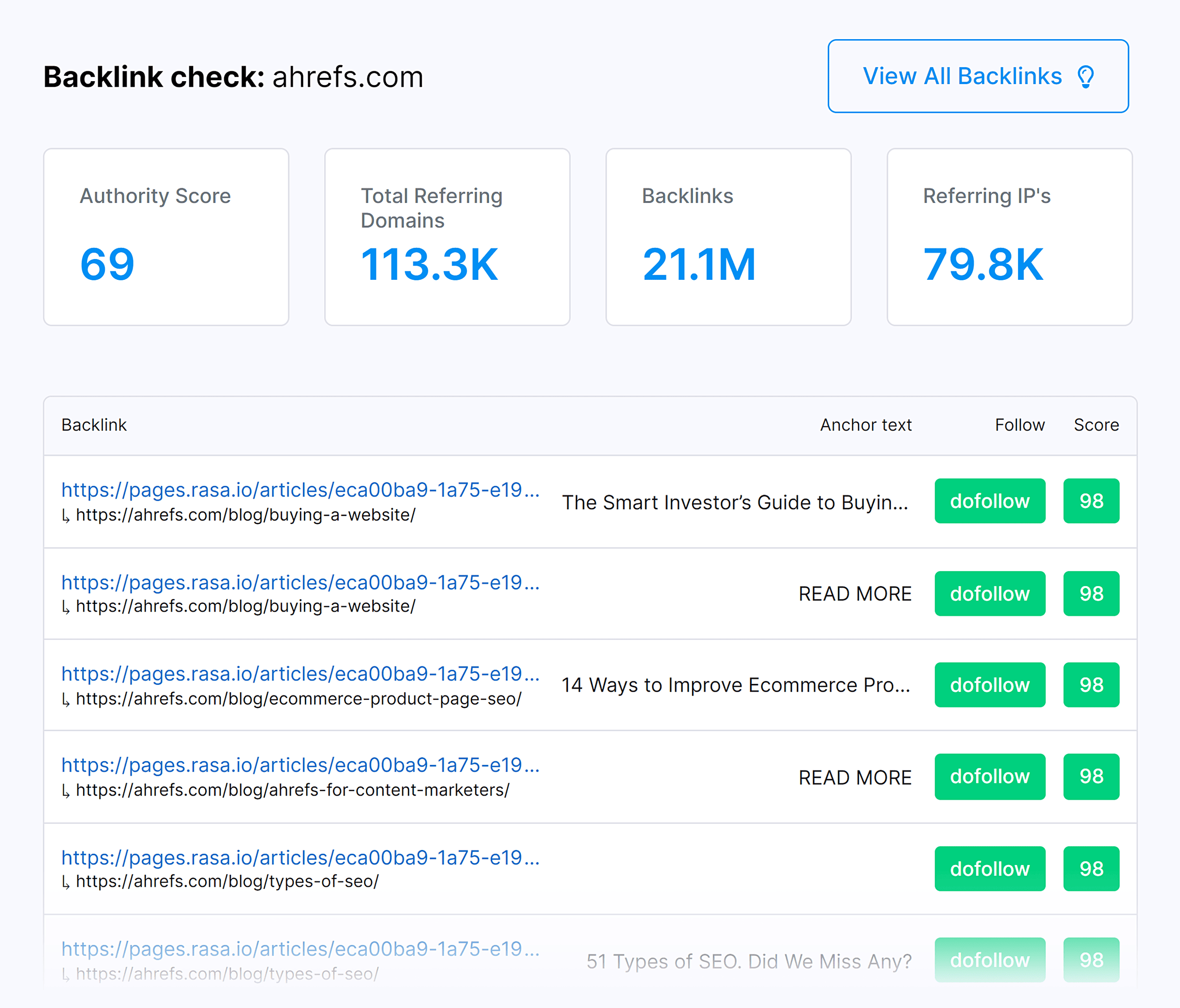Boosting your website traffic is crucial for any online business. This guide dives deep into various strategies, from understanding fundamental website traffic metrics to implementing effective content and technical techniques. We’ll explore user experience, social media, email marketing, paid advertising, and backlink building, offering actionable insights for optimizing your online presence and driving significant traffic growth.
We’ll cover essential aspects like different types of traffic, metrics for measurement, and the correlation between website traffic and business goals. This comprehensive approach will empower you with the knowledge and tools needed to achieve your online objectives.
Website Traffic Fundamentals
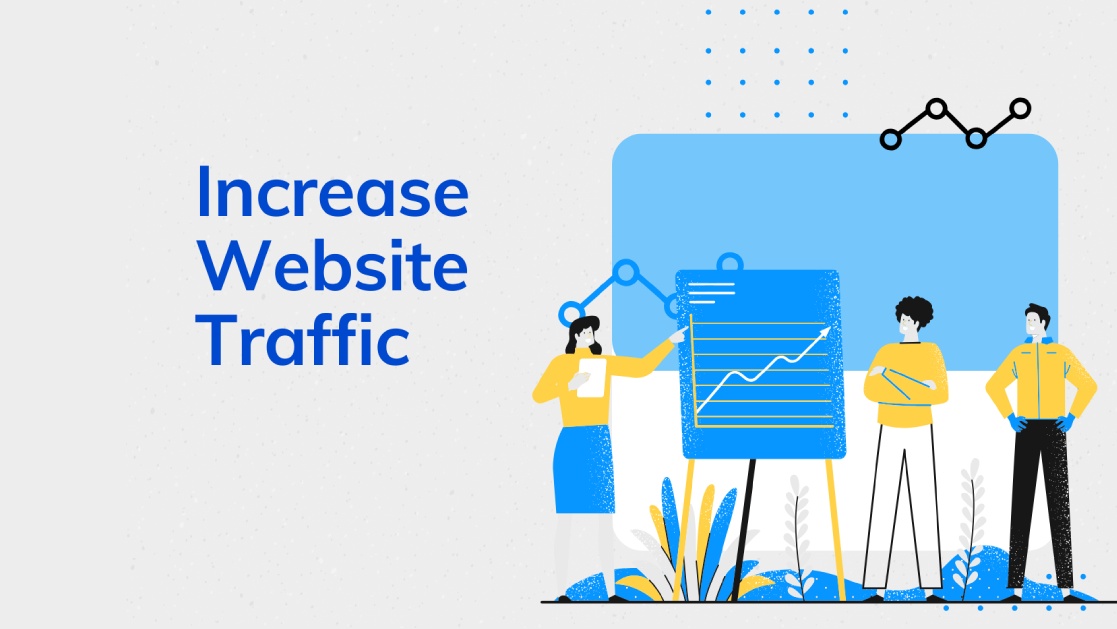
hakimisolutions.com
Driving traffic to your website is crucial for any online business. Understanding the different types of traffic, the metrics used to track it, and how it relates to your business goals is fundamental to success. This section provides a breakdown of these essential elements.
Website traffic encompasses various sources, each with its characteristics and impact on your online presence. Understanding these distinctions is key to optimizing your strategies and achieving your business objectives.
Types of Website Traffic
Website traffic can be categorized into several types, each reflecting a different source of visitors. Knowing where your visitors are coming from helps tailor your marketing efforts for maximum effectiveness.
- Organic traffic arises from users finding your website through search engine results. This traffic often indicates a genuine interest in your products or services, making it valuable for building a loyal customer base. For example, if someone searches for “best running shoes” and your site appears in the top results, that’s organic traffic.
- Referral traffic originates from other websites that link to your site. These links can be from partner sites, industry blogs, or even competitor sites, depending on your strategy. This traffic often signals trust and credibility from external sources. For example, a fitness magazine might link to your running shoe website.
- Direct traffic refers to users who type your website address directly into their browser. This usually indicates repeat customers or users who have bookmarked your site, demonstrating brand recognition and loyalty. For example, a customer who already knows your running shoe store’s website address will type it directly.
Importance of Website Traffic for Online Businesses
Website traffic is the lifeblood of any online business. A consistent flow of visitors is essential for generating leads, increasing brand awareness, and ultimately driving sales. High traffic levels demonstrate the appeal of your products or services and the value proposition you offer. For instance, high traffic usually translates to a wider reach and increased visibility in the online market, making it easier for potential customers to discover and interact with your brand.
Metrics Used to Measure Website Traffic
Various metrics provide insights into the performance of your website and the effectiveness of your strategies. Monitoring these metrics allows for adjustments and improvements in your approach.
- Page views represent the total number of pages viewed on your website. This is a fundamental metric for understanding the overall interest in your content. High page views can indicate that your content is engaging and relevant to your target audience.
- Bounce rate measures the percentage of visitors who leave your website after viewing only one page. A high bounce rate might suggest that your website’s landing pages or content aren’t relevant or engaging enough to keep visitors on your site.
- Session duration represents the average time spent by visitors on your website. A longer session duration indicates that your content is interesting and valuable to your visitors, keeping them engaged with your site. For example, if a visitor spends 5 minutes on your product page, that’s a good indicator of interest.
Relationship Between Website Traffic and Business Goals
Website traffic directly impacts the achievement of various business objectives. Understanding this correlation allows for strategic planning and resource allocation.
| Website Traffic | Business Goals |
|---|---|
| High traffic volume | Increased brand awareness, greater lead generation, and higher sales |
| Targeted traffic | Improved conversion rates, enhanced customer engagement, and stronger brand loyalty |
| Consistent traffic | Sustainable growth, improved profitability, and long-term business success |
Content Strategies for Traffic Boost
Attracting website visitors hinges on a compelling content strategy. This involves understanding your target audience and crafting content that resonates with their needs and interests. Effective content not only draws visitors but also fosters engagement, encouraging them to explore further and potentially convert. A well-planned content strategy is essential for long-term website success.
Creating content that captivates your audience is crucial for driving traffic. A variety of formats can be utilized to accomplish this. This ranges from engaging blog posts and informative articles to visually appealing infographics and compelling videos. Each format has the potential to attract a specific segment of your target audience, depending on their preferences and consumption habits.
Types of Content for Website Traffic
Different content formats can effectively engage your audience. Choosing the right format depends on your audience’s preferences and the message you aim to convey. Blog posts and articles are ideal for providing in-depth information, while videos and infographics are effective for capturing attention and presenting complex information concisely.
- Blog Posts and Articles: These formats offer a platform for in-depth exploration of topics related to your niche. Well-written and informative articles can establish your authority and attract readers who are actively searching for information. Regularly updated blog posts signal ongoing activity and keep visitors coming back for more.
- Videos: Videos can be highly engaging, especially for audiences who prefer visual learning. Explainer videos, product demonstrations, and behind-the-scenes glimpses can effectively communicate your brand’s personality and attract potential customers.
- Infographics: Infographics present complex data or information in a visually appealing format. They are particularly useful for highlighting key takeaways and statistics, making it easy for readers to grasp information quickly and retain it better.
Importance of Valuable and Engaging Content
High-quality content is paramount for attracting and retaining website visitors. Engaging content goes beyond simply providing information; it resonates with the reader’s needs and interests. Creating content that is both informative and engaging can build trust and credibility, leading to increased conversions and a loyal customer base. The value of your content directly impacts its ability to attract and retain visitors.
- Value: Valuable content directly addresses the needs and interests of your target audience. It offers solutions, insights, and information that readers find helpful and relevant. It builds credibility and establishes your expertise in the field.
- Engagement: Engaging content captures the reader’s attention and encourages interaction. This could involve questions, polls, calls to action, or interactive elements within the content itself.
Effective Content Strategies for Various Niches
Content strategies should be tailored to the specific niche and target audience. For example, a fashion blog might feature stylish images, detailed product reviews, and interviews with designers, while a tech blog might focus on in-depth product comparisons, tutorials, and the latest industry news.
- Fashion Blog: Focus on visual appeal, trend insights, and styling tips. Highlight product reviews, interviews with designers, and behind-the-scenes glimpses into the fashion world.
- Tech Blog: Provide detailed comparisons of products, tutorials on using new technologies, and industry news. Emphasize in-depth analysis and informative content.
- Food Blog: Share delicious recipes, cooking tips, and food photography. Include stories about the ingredients and the cooking process to make the content more engaging.
Content Format and Traffic Potential
The table below illustrates the potential for various content formats to drive traffic to a website. The traffic potential is dependent on factors like content quality, optimization, and promotion efforts.
| Content Format | Potential for Traffic Generation | Example |
|---|---|---|
| Blog Posts | High | In-depth articles on industry trends |
| Videos | High | Explainer videos demonstrating product use |
| Infographics | Medium | Visual representations of data and statistics |
| Articles | Medium-High | Well-researched articles on a specific topic |
Technical Best Practices: Boost Your Website Traffic
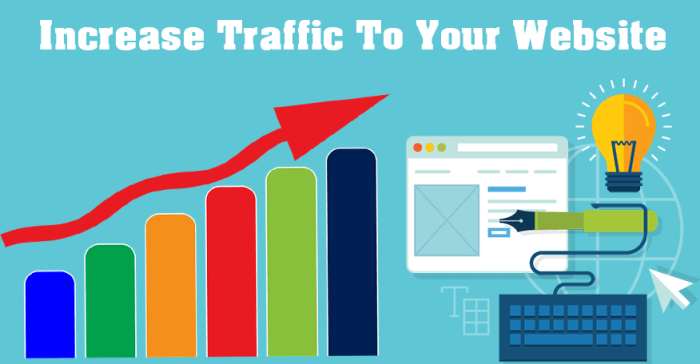
Source: technians.com
Technical plays a crucial role in enhancing website visibility and driving organic traffic. Optimizing the technical aspects of your website ensures search engine crawlers can easily access and understand your content, leading to higher rankings in search results. This section delves into critical technical elements and actionable strategies to boost your website’s performance.
Effective technical goes beyond just content. It encompasses the underlying structure, speed, and mobile-friendliness of your website. Understanding and implementing these best practices significantly impacts your website’s overall performance in search engine rankings.
Website Loading Speed Optimization
Website loading speed is a critical factor in user experience and search engine rankings. Slow loading times lead to higher bounce rates and negatively impact user engagement. Search engines prioritize fast-loading websites, rewarding them with higher rankings. Optimizing loading speed involves various strategies, such as image optimization, caching, and leveraging browser caching.
- Image Optimization: Compressing images without sacrificing quality is essential. Utilize formats like WebP, which often offer superior compression compared to JPEGs. Properly sizing images for different devices also significantly impacts loading times. Optimized images contribute to quicker page load times, improving user experience and search engine rankings.
- Caching: Caching mechanisms store frequently accessed content on servers, allowing for faster delivery to users. This reduces server load and speeds up page loading times, leading to improved user experience and better search engine rankings.
- Browser Caching: Enabling browser caching allows browsers to store static resources, like images and CSS files, locally. Subsequent visits to the site can load these resources faster, contributing to a better user experience.
Mobile Optimization
Mobile-friendliness is no longer an option but a necessity for websites aiming for high rankings. A significant portion of web traffic originates from mobile devices. Failing to optimize for mobile users results in a poor user experience, higher bounce rates, and diminished search engine rankings. Responsive web design, ensuring consistent functionality across different devices, is paramount for mobile optimization.
- Responsive Design: A responsive website automatically adjusts its layout and content to fit the screen size of different devices. This ensures a seamless experience on desktops, tablets, and smartphones. Responsive design enhances user engagement and satisfies the mobile-first indexing policy of search engines, which prioritize mobile-friendly websites.
Technical Elements Influencing Traffic
Several technical elements directly impact website traffic. These elements include website architecture, sitemaps, robots.txt, and URL structures.
- Website Architecture: A well-structured website with clear navigation helps search engine crawlers easily index and understand your content. A logical site structure improves the user experience, leading to higher engagement and lower bounce rates. It’s essential for improved search engine rankings.
- Sitemaps: XML sitemaps provide a structured list of all the pages on your website, helping search engine crawlers discover and index your content efficiently. Sitemaps ensure comprehensive indexing, which is crucial for higher search engine rankings.
- Robots.txt: This file instructs search engine crawlers on which parts of your website to crawl and index. Properly configured robots.txt prevents search engines from wasting resources on irrelevant content, which can improve website performance and user experience. Efficient use of robots.txt facilitates proper indexing, contributing to better search engine rankings.
- URL Structure: Optimized URLs are concise, descriptive, and incorporate relevant SEO. Clear and well-structured URLs enhance user experience and improve search engine crawlers’ understanding of the page’s content. Effective URL structure improves search engine rankings.
Technical Improvements and Impact on Website Traffic
The table below illustrates the impact of various technical improvements on website traffic.
| Technical Improvement | Impact on Website Traffic |
|---|---|
| Optimized Image Sizes | Reduced page load time, improved user experience, potentially leading to higher rankings and more traffic. |
| Mobile-Friendly Design | Improved user experience on mobile devices, reduced bounce rates, and a potential increase in mobile traffic. |
| XML Sitemap Implementation | Enhanced search engine crawling and indexing, potentially resulting in improved rankings and traffic. |
| Robots.txt Optimization | Efficient resource utilization by search engine crawlers, potentially leading to better indexing and improved traffic. |
Improving User Experience

800c8044-cdn.agilitycms.cloud
A crucial aspect of boosting website traffic is focusing on the user experience (UX). A positive UX encourages visitors to stay longer, explore more pages, and return in the future. This ultimately translates into increased engagement and, consequently, higher search engine rankings. A well-designed website, with intuitive navigation and clear calls to action, fosters a seamless and enjoyable interaction, making users more likely to convert into customers or loyal visitors.
A user-friendly website design fosters trust and confidence, encouraging repeat visits and referrals. By prioritizing the user experience, website owners can significantly enhance their visibility and attract a wider audience, ultimately leading to a substantial increase in website traffic.
Key Elements Impacting User Experience
A positive user experience is multifaceted. Several key elements directly influence how users perceive and interact with a website. These elements include website speed, design aesthetics, mobile responsiveness, and ease of navigation. The design aesthetic, while subjective, plays a critical role in creating a welcoming and visually appealing environment for visitors.
- Website Speed: Slow loading times can significantly deter users. A website that takes too long to load can lead to high bounce rates and a negative user experience. Optimizing images, using a content delivery network (CDN), and minimizing HTTP requests can dramatically improve page load times. Websites with faster loading times generally see higher traffic, as visitors are less likely to abandon a page that takes too long to load.
- Design Aesthetics: A visually appealing website design enhances user engagement. A well-structured layout, appropriate color schemes, and high-quality imagery can improve the overall user experience. A visually unappealing site can make users feel uncomfortable, leading to decreased engagement and ultimately less traffic.
- Mobile Responsiveness: With the rise of mobile internet usage, ensuring a website is fully responsive across various devices is critical. A website that functions seamlessly on all devices (desktop, tablet, mobile phone) provides a consistent and positive user experience, regardless of the device used. Mobile-friendliness is increasingly a ranking factor for search engines, further emphasizing its importance for traffic generation.
- Intuitive Navigation: Clear and intuitive navigation helps users find what they’re looking for quickly and easily. A well-organized sitemap, logical menus, and clear labeling of pages are essential. Users who can easily navigate a website are more likely to find what they need, leading to higher user engagement and potentially increased traffic.
Intuitive Navigation and Clear Calls to Action
Intuitive navigation and clear calls to action are critical for guiding users through the website and encouraging desired actions. Clear and concise navigation allows users to easily explore the site’s content and find relevant information, while effective calls to action encourage conversions. These features increase user engagement, which directly translates to higher traffic.
- Intuitive Navigation: A well-designed website uses logical and easily understood navigation structures. This facilitates the user’s journey through the site, allowing them to easily find specific content or services. A user-friendly navigation system encourages visitors to explore the site more thoroughly, leading to higher traffic and potentially increased engagement.
- Clear Calls to Action (CTAs): CTAs are crucial for directing user behavior towards a desired action. Effective CTAs use compelling language and prominent placement to guide users to complete tasks such as purchasing a product or subscribing to a newsletter. Clear and effective CTAs can improve conversions and boost website traffic.
Comparing Poor and Good UX Elements
The following table contrasts poor and good UX elements and their potential effects on user behavior:
| UX Element | Poor UX | Good UX | Effect on User Behavior |
|---|---|---|---|
| Navigation | Confusing, illogical menu structure, hidden information, poor sitemaps. | Clear, intuitive menus, logical site structure, easy-to-find information. | Poor UX: Frustration, abandonment; Good UX: Exploration, engagement. |
| Loading Speed | Slow loading times, long page load times. | Fast loading times, optimized images, and effective caching. | Poor UX: Frustration, abandonment; Good UX: Patience, engagement. |
| Mobile Responsiveness | Poor mobile display, non-responsive design, and difficulties accessing content. | Fully responsive design, optimized for various devices, and easy mobile access. | Poor UX: Frustration, abandonment; Good UX: Accessibility, engagement. |
| Content Clarity | Complex, confusing language, irrelevant content, poor grammar. | Clear, concise language, relevant content, and high-quality writing. | Poor UX: Confusion, disengagement; Good UX: Understanding, engagement. |
Utilizing Social Media and Promotion
Social media platforms have become indispensable tools for driving website traffic. Leveraging these platforms effectively can significantly amplify your online presence and attract a wider audience. This section explores the power of social media marketing and Artikels’ strategies for maximizing its impact.
Social media is no longer a niche activity but a core component of any successful digital marketing strategy. By tailoring your approach to each platform and crafting engaging content, you can leverage social media’s vast reach to connect with potential customers and drive meaningful traffic to your website.
Different Social Media Platforms for Website Traffic
Social media platforms offer diverse functionalities and user demographics. Choosing the right platforms aligns your efforts with your target audience. A multifaceted approach, utilizing multiple platforms, is often more effective than focusing on a single one.
- Facebook: A mature platform with a large and diverse user base. Its targeted advertising capabilities are robust, allowing precise targeting based on demographics, interests, and behaviors. Facebook groups can also be highly effective for engaging with communities and fostering discussions related to your niche.
- Instagram: Visual-centric, Instagram excels at showcasing products or services visually. High-quality images and engaging video content are crucial for success. Utilizing Instagram Stories and Reels can help capture attention and maintain engagement.
- Twitter: A platform known for its real-time updates and concise communication. Twitter is excellent for sharing news, announcements, and interacting with influencers. A strong Twitter presence can be highly effective for building brand awareness and generating quick bursts of website traffic.
- LinkedIn: A professional networking platform. LinkedIn is best suited for B2B marketing, where professionals and businesses interact. Sharing thought leadership content, participating in relevant groups, and connecting with industry leaders can significantly enhance your professional visibility and drive traffic.
- TikTok: A short-form video platform. Its highly engaging format and wide appeal make it an attractive platform for reaching younger audiences. Trendy video content and viral marketing strategies can generate significant traffic if implemented correctly.
Effective Strategies for Promoting Website Content on Social Media
Effective social media promotion involves more than just posting content. A well-defined strategy ensures your efforts yield meaningful results.
- High-Quality Content Creation: Engaging content is paramount. This includes visually appealing images, informative articles, or captivating videos. Ensure your content resonates with your target audience and aligns with your brand identity.
- Consistent Posting Schedule: Maintaining a regular posting schedule keeps your audience engaged. Consider your audience’s online habits and schedule your posts accordingly. Tools can automate posting and help with scheduling.
- Engaging with Your Audience: Respond to comments and messages promptly. Foster a sense of community by actively engaging with your followers. This shows genuine interest and strengthens your brand’s connection with your audience.
- Utilizing Relevant Hashtags: Hashtags increase visibility and allow your posts to reach a wider audience. Research relevant hashtags and use them strategically in your posts.
- Paid Advertising: Paid social media advertising can significantly boost your reach and drive targeted traffic. Utilize platforms’ advertising tools to target specific demographics and interests effectively.
Social Media Marketing and Complementing Other Traffic-Building Efforts
Social media is not an isolated marketing tactic. It can and should complement other traffic-building efforts, such as search engine optimization and content marketing.
- Driving Traffic to Your Website: Promote your website content across social media platforms, linking to specific articles or product pages. This will increase visibility and attract more visitors to your site.
- Building Brand Awareness: Consistent engagement and sharing of valuable content build brand recognition and strengthen your online presence. This creates a loyal audience base that will return to your website.
- Enhancing Search Engine Optimization (SEO): Social media signals can influence search engine rankings. Increased social media engagement, such as likes, shares, and comments, can positively affect your website’s visibility in search results.
Comparison of Social Media Platforms
The effectiveness of a social media platform often depends on your target audience and marketing goals.
| Platform | Pros | Cons |
|---|---|---|
| Large user base, targeted advertising, and community building | It can be overwhelming, algorithm changes impact visibility | |
| Visual focus, strong engagement for younger demographics | Limited text-based content, the algorithm prioritizes visual content | |
| Real-time updates, quick engagement, great for news and announcements | Character limits, content quickly gets lost in the stream | |
| Professional networking, B2B marketing, and thought leadership | Less engagement for consumers, less visually appealing | |
| TikTok | High engagement, viral potential, and broad reach to a younger audience | Algorithm-driven content may be short-lived |
Email Marketing Strategies for Traffic
Email marketing remains a potent tool for driving website traffic and nurturing leads. By strategically incorporating email campaigns into your overall marketing strategy, you can cultivate a loyal subscriber base and convert them into engaged customers. Effective email campaigns are crucial for reinforcing brand identity and building relationships with your target audience.
Building an engaged email list and crafting compelling email content are essential components of a successful email marketing strategy. This approach goes beyond simply sending out promotional emails. It involves understanding your audience, segmenting your subscribers, and tailoring your messages to resonate with their specific needs and interests. This targeted approach maximizes the impact of your emails and ultimately increases website traffic.
Growing an Email List
Effective email list growth relies on offering valuable incentives and clear calls to action. Providing valuable content, such as ebooks, webinars, or exclusive content, can entice potential subscribers to share their email addresses. Incentivize sign-ups with exclusive discounts, early access to products, or free resources. Employing a multi-channel approach is crucial. Integrating sign-up forms into your website, social media pages, and other online platforms allows for broader reach. This strategic integration across various touchpoints enhances the chances of attracting potential subscribers.
Promoting Website Content via Email
Email marketing provides a direct channel for promoting your website content. Include links to blog posts, articles, product pages, and landing pages within your emails. Use compelling subject lines to grab attention and encourage readers to open your emails. Segment your subscribers based on their interests and past behavior to deliver personalized content recommendations. This tailored approach increases the likelihood of readers engaging with your website content. Promoting new blog posts or product releases in your emails can significantly boost website traffic and drive conversions.
Crafting Compelling Email Subject Lines and Body Content
Compelling subject lines are critical for driving email open rates. Keep them concise, clear, and benefit-driven. Highlight the value proposition for the recipient, addressing their specific needs or interests. A clear call to action within the subject line will also improve engagement. Email body content should be engaging, informative, and visually appealing. Use a clear and concise writing style. Break up large blocks of text with images and bullet points to improve readability. Maintain a consistent brand voice and tone throughout all your emails. This consistency reinforces brand recognition and builds trust with your subscribers.
Email Marketing Best Practices
| Best Practice | Example |
|---|---|
| Personalization | Tailoring email content based on subscriber demographics, purchase history, or website interactions. |
| Segmentation | Dividing subscribers into groups based on shared characteristics or interests for targeted messaging. |
| Clear Call to Action (CTA) | Including a prominent button or link that directs subscribers to the desired destination, like a product page or blog post. |
| Mobile Optimization | Ensuring emails render correctly across different mobile devices. |
| Testing and Analysis | Regularly A/B testing subject lines, content, and CTAs to optimize performance and identify areas for improvement. |
| Compliance with Anti-Spam Regulations | Adhering to CAN-SPAM Act guidelines and providing clear unsubscribe options. |
Analyzing Traffic Sources and Performance
Understanding where your website traffic originates and how well different channels perform is crucial for optimizing your marketing strategies. This knowledge allows you to allocate resources effectively, identifying high-performing channels and redirecting efforts towards those areas. A comprehensive analysis of traffic sources and performance metrics is vital for sustained website growth and profitability.
A detailed analysis of website traffic data reveals insights into user behavior, allowing for targeted improvements in user experience, content strategy, and overall website structure. This comprehensive approach helps understand which marketing campaigns are most successful, identifying areas needing adjustment or enhancement. This analysis enables businesses to make data-driven decisions to improve website performance and achieve desired goals.
Tracking Website Traffic Sources
Several methods exist for tracking website traffic sources, providing valuable insights into the origins of your visitors. Utilizing tools like Google Analytics allows you to monitor the performance of different traffic channels and understand user behavior on your site. Detailed tracking enables the identification of successful campaigns and effective channels for future optimization.
Analyzing Website Traffic Data Framework
A structured approach to analyzing website traffic data is essential. This framework involves several key steps. First, define clear goals and objectives. Next, establish key performance indicators (KPIs) that align with those goals. Third, collect and analyze the relevant data from your chosen tools. Finally, interpret the findings and adjust your strategies accordingly. This iterative process of collecting, analyzing, and adapting ensures consistent improvements in website performance.
Key Metrics for Assessing Traffic Effectiveness
Monitoring specific metrics is essential for evaluating the success of your traffic-building strategies. Crucial metrics include bounce rate, average session duration, pages per session, and conversion rate. These metrics provide a comprehensive view of user engagement and the effectiveness of your content and website structure.
Summary of Analytics Tools and Features: Boost your website traffic
| Tool | Key Features |
|---|---|
| Google Analytics | Comprehensive tracking and analysis of website traffic, including user behavior, demographics, and conversion rates. Provides detailed reports on traffic sources, user engagement, and other key metrics. |
| SEMrush | A robust tool offering extensive research, competitor analysis, and backlink analysis. Helpful for understanding organic search traffic and identifying potential opportunities for improvement. |
| Hotjar | Provides user experience insights through heatmaps, recordings, and surveys. Allows for identifying areas of friction on your website and improving the user experience. |
| Moz | Focuses on and provides data on backlinks, research, and site audits. Essential for understanding how your site ranks in search results and identifying opportunities to improve organic traffic. |
Building Backlinks

www.weareigloo.com
Building high-quality backlinks is crucial for boosting website traffic and search engine rankings. Backlinks act as endorsements from other reputable websites, signaling to search engines that your content is valuable and trustworthy. This process is a cornerstone of effective search engine optimization.
Acquiring these endorsements requires a strategic approach, focusing on quality over quantity. Simply accumulating numerous backlinks without regard to their source or relevance won’t yield the desired results. Instead, concentrate on building relationships with authoritative websites in your niche and creating content that naturally attracts backlinks.
Methods for Acquiring High-Quality Backlinks
A diverse range of methods can be employed to acquire high-quality backlinks. These methods focus on building relationships, creating valuable content, and participating in relevant online communities.
- Guest Posting: Contributing high-quality articles to other websites in your niche. This approach allows you to establish your expertise and link back to your website. The key is to focus on sites with a strong audience and a reputation for publishing valuable content.
- Broken Link Building: Identifying broken links on related websites and suggesting your content as a replacement. This requires careful research to find relevant, broken links and offer valuable alternatives.
- Resource Link Building: Creating valuable resources like infographics, downloadable guides, or templates, and distributing them through relevant platforms. This method establishes your website as a valuable resource, attracting links naturally.
- Participating in Online Communities: Engaging in forums, social media groups, and online communities relevant to your niche. Providing valuable insights and building relationships within these communities can lead to opportunities for backlinks.
- Reaching Out to Influencers: Collaborating with influencers in your industry to promote your website and content. This approach leverages their existing audience to drive traffic and attract backlinks.
Importance of Building Backlinks for Search Engine Rankings
Backlinks are a key factor in search engine rankings. Search engines consider backlinks as votes of confidence from other websites. A higher number of high-quality backlinks from reputable websites indicates that your content is valuable and trustworthy.
“Backlinks are a crucial component of Google’s ranking algorithm.”
This strengthens your website’s position in search engine results pages (SERPs), making it more visible to potential customers. The higher the website’s authority, the greater the impact on your own site’s ranking.
Role of Backlinks in Driving Organic Traffic
Backlinks are essential for driving organic traffic to your website. When a user clicks on a backlink from a reputable website, they are directed to your website, increasing your website’s visibility and potentially leading to conversions. Backlinks contribute to the overall authority and credibility of your website.
Different Types of Backlinks and Their Value
The value of a backlink varies based on the authority and relevance of the linking website. A backlink from a highly authoritative website in your niche will have a greater impact than a backlink from a less authoritative site.
| Type of Backlink | Description | Value |
|---|---|---|
| Backlink from a high-authority website (e.g., .gov, .edu, well-known news outlet) | Links from trusted and influential websites. | High |
| Backlink from a relevant website in your niche | Links from websites closely related to your content. | Medium |
| Backlink from a website with low authority | Links from websites with limited influence. | Low |
| Backlink from a spammy website | Links from websites with a history of violating search engine guidelines. | Negative |
Conclusive Thoughts
In conclusion, achieving significant website traffic requires a multi-faceted approach. By strategically implementing the diverse methods Artikeld—from content creation and technical to social media engagement and paid advertising—you can effectively increase your website traffic. Remember, consistent effort, analysis, and adaptation are key to sustained growth and success in the ever-evolving online landscape. This guide provides a roadmap for your journey, equipping you with the necessary steps to boost your website traffic and achieve your business objectives.


